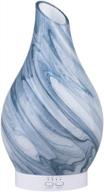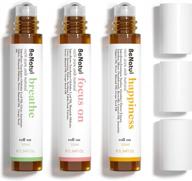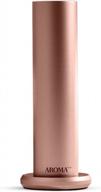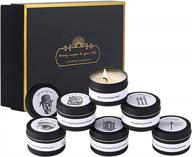Top products in 🌿 Alternative Medicine
How to use essential oils for aromatherapy at home?
Aromatherapy using essential oils can be a great way to promote relaxation and wellbeing in your own home. Here are some tips for getting started with using essential oils at home:
Choose your oils
When selecting oils for home use, opt for 100% pure, therapeutic-grade oils. Some good starter oils to consider are:
- Lavender - calming, aids sleep
- Bergamot - reduces stress, boosts mood
- Peppermint - energizing, improves focus
- Eucalyptus - clears sinuses, reduces congestion
Pick your method of diffusion
You can diffuse essential oils in various ways at home including:
- Aromatherapy diffuser - add drops of oil to water and diffuse mist into air
- Steam inhalation - add oils to bowl of hot water and breathe in steam
- Spritzer - add oils to water in a spray bottle and mist around room
Create a relaxing environment
When diffusing oils at home, create a relaxing ambiance. Dim the lights, play soft music, and unplug from digital devices. Take time to inhale the aroma deeply and focus on the sensory experience.
With high quality oils and the proper diffusion method, enjoy the stress-relieving benefits of aromatherapy right at home.
How to make your own custom essential oil blends?
Creating your own unique essential oil blends can be both fun and rewarding. Here are some tips on blending your own custom oil combinations at home:
Pick your base oil
Start with a base carrier oil like:
- Sweet almond oil
- Jojoba oil
- Fractionated coconut oil
The base oil will dilute and carry the essential oils in your custom blend.
Select your essential oils
Next choose 2-4 complementary essential oils to add, such as:
- Lavender - calming and floral
- Bergamot - citrusy and uplifting
- Cedarwood - woodsy and grounding
- Ylang ylang - sweet and romantic
Add oils sparingly
Only add about 12-15 drops of essential oils per ounce of carrier oil. Essential oils are very potent!
Blend and test
Add your selected oils to the base carrier oil in a glass bottle. Cap and shake gently to mix. Test a small amount on your skin and adjust the oils as needed to suit your preferences.
Store properly
Keep your custom essential oil blend in a dark glass bottle, away from direct sunlight. Properly stored, your blend will retain its aromatic qualities for several months.
Making your own blends allows you to create unique oil combinations for your specific aromatherapy needs.
How to get started with essential oil diffusers?
Essential oil diffusers are a great way to enjoy aromatherapy benefits at home. Here's how to choose and use an essential oil diffuser:
Pick a diffuser type
There are a few main types of diffusers:
- Ultrasonic/humidifying - uses water and ultrasonic vibrations to diffuse oil mist
- Nebulizing - uses pressurized air to diffuse pure concentrated oil
- Evaporative - exposes oils to open air to diffuse aroma
- Heat - gently heats oil to promote diffusion
Ultrasonic and nebulizing diffusers are most popular for home use.
Select diffuser features
Look for diffusers with:
- Auto shut-off - turns off when water runs out
- Timer - runs for specified time period
- Color changing LED lights - for mood lighting
- coverage area and runtime.
Use proper oils
Be sure to use 100% pure essential oils. Citrus and floral oils work best. Follow oil guidelines for your diffuser.
Position diffuser appropriately
Don't place directly under vents or fans. Place in bedroom for nighttime use or workspace for concentration.
With a quality diffuser and pure essential oils, you'll be ready to enjoy aromatic benefits.
How to make scented soaps and candles with essential oils?
Essential oils are a great way to add natural fragrance to handmade soaps and candles. Here's how to infuse them with lovely scents:
Pick complementary scents
Choose essential oils with fragrances that pair well together, like:
- Lavender and lemon
- Rosemary and grapefruit
- Cedarwood and bergamot
Add oils to soap
For cold process soap making, add 15-30 drops of essential oils per pound of soap oils before trace. For melt and pour soap, add 5-15 drops oils per pound of melted base.
Use candle wax suitable for essential oils
Soy, coconut, or apricot wax work better than paraffin for holding fragrance. Beeswax also pairs nicely.
Add oils to candle wax
For container candles, add 18-24 drops essential oils per pound of wax. For pillars or tarts, use 12-18 drops per pound. Stir well to incorporate.
Mind safety precautions
Keep wax below 185°F before adding oils. Some oils like cinnamon can accelerate wick issues. Research oil flashpoints.
Allow proper cure time
Soaps require 4-6 weeks curing time. Candles need 1-2 weeks to fully bind fragrance before burning.
With the right essential oils and proper infusion methods, you'll have wonderfully scented handmade soaps and candles.














